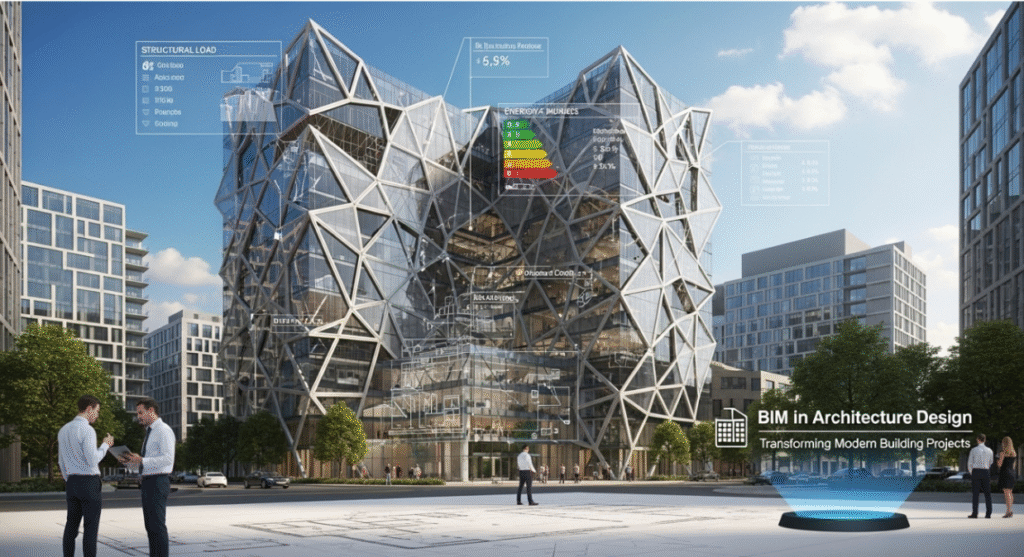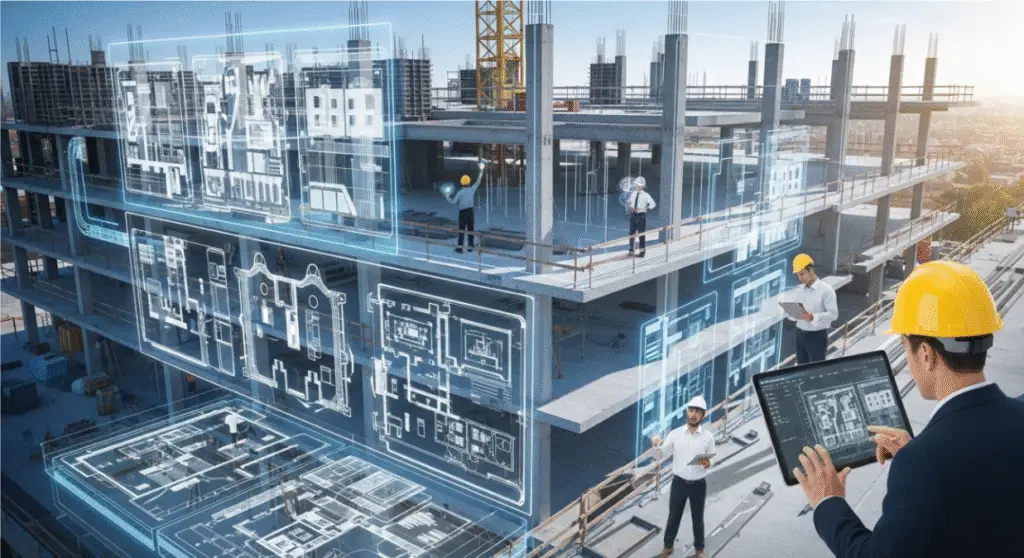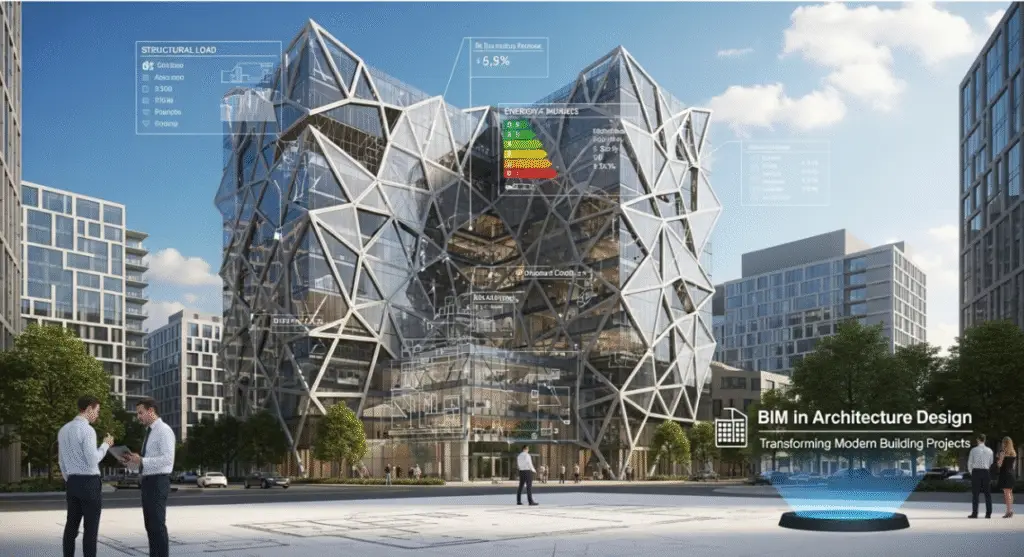
In today’s rapidly evolving design and construction industry, the old ways of preparing and executing projects are no longer adequate. Engineers, architects, and developers are turning towards digital technologies that provide greater precision, clarity and a more collaborative design process. One of these game-changing innovations is BIM in architecture design. The acronym stands for Building Information Modeling. BIM isn’t just software; it’s an approach that’s changing how buildings are conceptualized and constructed. It is also a method of delivering buildings that are detailed and precise.
From the initial conceptualization stage through the final stages of construction and operations, BIM in architectural design streamlines workflows and increases the quality of outcomes across the board. It allows architects to see each component of a structure within a common environment, allowing for smarter choices and faster execution.
What Is BIM in Architecture Design?
At its heart, BIM in architectural design is a method in which digital models with intelligent algorithms are created to depict the physical and functional aspects of a structure. Contrary to traditional methods of drafting in 2D, BIM involves a dynamic model that grows as the project progresses and provides details about the materials used and cost timeframes, as well as energy performance and much more.
The utilization of BIM modeling services in architectural design allows architects to work effortlessly with contractors, engineers and customers, ensuring that everyone is working on a common, current digital representation of the design. This helps reduce errors, speed revising, and provide more efficient project outcomes.
The Rise of Architectural BIM/VDC Services
Architectural BIM/VDC Services (virtual design and construction) stand at the leading edge of this evolution. These services incorporate BIM methods and tools into the planning and implementation of projects. From visualizing design to construction sequencing and clash detection, VDC enables stakeholders to visualize construction before it starts, thereby saving time and money and reducing the need for rework.
These services also guarantee that BIM architecture services are integrated into what happens on the construction site. In turn, moving from designing to implementation can be smooth and quick, eliminating some of the coordination problems that plagued previous large projects.
When you’re creating the highest-rise residential structure or a hospital or commercial complex that is a part of mixed-use, architectural BIM services help streamline the coordination of design, reduce inefficiencies, and create long-term value.
How BIM Modeling Service Enhances Design Precision
These models aren’t only visual tools; they’re also packed with information. From sections and floor plans to specifications for materials along with cost estimates, everything’s integrated into a single digital file. This lets designers and architects create the design and analyze and improve designs before any physical construction begins.
When BIM is utilized by a reputable BIM outsourcing company it ensures that the models are accurate, standardized, and compatible with a variety of project stakeholders. They specialize in delivering precise and code-compliant designs, which reduce the chance of costly design modifications in the future.
By the integration of BIM architecture services at an early stage, designers have complete control of each stage, from conception to the final stage of construction.
Why More Firms Choose BIM Architecture Services
The rising use of BIM architecture services isn’t just a trend; it’s an absolute necessity. As buildings get more complicated and sustainability demands increase, the need for intelligent and data-driven design has exploded.
These services provide:
- Better visualization and design communication
- Easier stakeholder collaboration
- Improved cost estimation and Quantity take-offs
- Amplification of construction planning and the phasing
- Integration of energy analysis systems and facilities management systems
The use of BIM in architectural design will also guarantee the compliance of international building codes and standards that are crucial for companies that are involved in large-scale or international projects.
BMSI: Leading the BIM Transformation
One of the organizations that are promoting this new digital era among them is BMSI. They are known for their outstanding BIM-based architectural services and a robust BIM modeling service package.
BMSI provides a wide range of architectural BIM/VDC services that cover each stage of the architecture process. Their expertise across various areas like education, commercial healthcare, and infrastructure projects makes them a reliable partner for designers looking at efficiency and precision.
Whether you’re an architect that is looking to use detail-oriented models or a software developer in need of a clash-free coordination system, BMSI helps elevate your design capabilities by providing cutting-edge BIM solutions.

The Future of Design: BIM is Here to Stay
As more and more firms adopt BIM in architecture design, the future of architectural practice is increasingly integrated, digital and smart. BIM gives architects a new degree of clarity, coordination, and collaboration that traditional methods can’t beat.
Companies that partner with a reputable provider for BIM modeling services or work with a dependable BIM outsourcing company such as BMSI benefit from a competitive advantage, not just in the execution of designs but also in customer satisfaction and profit margins for projects as well.
Conclusion
The shift to BIM in architectural design is not just changing tools. It’s a rethinking of the process of design and construction itself. With Architectural BIM/VDC Services, professionals are able to design smarter buildings more quickly without making mistakes and achieve more efficiency.
BMSI with the help of expert teams like those at BMSI and the application of custom BIM architecture services. The world of architecture is about to enter a new era of collaboration, precision, and triumph.

